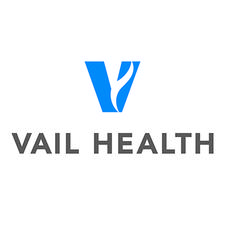Widgetized Section
Go to Admin » Appearance » Widgets » and move Gabfire Widget: Social into that MastheadOverlay zone
New academic report details unique response of Eagle County, Vail Health during COVID-19 pandemic
Vail Health on Thursday issued the following press release on a new academic report detailing the coordinated response to COVID-19 by Vail Health, Eagle County and other agencies:
A new report titled “All Public Health Is Local: Lessons from Eagle County During the First Two Years of the Covid-19 Pandemic” has been published in Medical Care, the official journal of the Medical Care Section of the American Public Health Association. The report describes how Colorado’s Eagle County, Vail Health, and other county agencies collaborated to address the immediate and unprecedented challenges of the COVID-19 pandemic. Their coordinated response offers lessons for other U.S. counties wanting to improve public health outcomes in the face of a new pandemic.

In January 2020, the Eagle County Public Health Department and Vail Health, the local nonprofit community health care system, recognized the potential for the SARS-COV2 virus to become a serious worldwide pandemic with significant implications for Eagle County residents and its foreign and domestic visitors who come to enjoy the area’s ski resorts, mountains and rivers. A 40-member taskforce was formed to anticipate public health needs and prepare a robust response. The composition of the taskforce was unusual in that it was staffed primarily with mid-level managers, each authorized by their respective employers to make whatever decisions were deemed necessary. These employers included Vail Health; Eagle County’s Public Health Department, Paramedic and Fire services, and Public School District; two major medical providers (Colorado Mountain Medical and Mountain Family Health Centers); and Castle Peak, the county’s only assisted living and nursing home. Vail Health’s Chief Population Health Officer, Chris Lindley, an epidemiologist and former director of Eagle County Public Health and Environment, served as the taskforce’s Incident Commander.

Beginning in March 2020 and continuing through the first six months of the pandemic, taskforce members met by phone, twice daily (8 a.m. and 8 p.m.), seven days a week. Their constant communication and coordination enabled rapid decision-making and quick course corrections without the burdens of executive-level micromanagement or political interference.
As a result, Eagle County achieved impressive results. It became the first county in Colorado to receive personal protective equipment, the first to open a drive-through COVID-19 testing facility, and one of the first to receive the COVID-19 vaccines.
Additionally, Vail Health Hospital’s Intensive Care Unit (ICU) never reaching maximum capacity for COVID-19 cases. Eagle County achieved a case fatality rate (percentage of COVID-19 cases that died) of 0.34%, compared to that of the State of Colorado (1.2%) and the U.S. (1.8%). By March 2022, 100% of Eagle County’s eligible population had received at least one dose of COVID-19 vaccine, and 83% of its population had been fully vaccinated. These are among the highest vaccination rates in both Colorado and the United States.
The report, “All Public Health Is Local,” was co-authored by Eagle County resident William Knaus, M.D., a Professor Emeritus of Public Health Sciences at the University of Virginia Health System; Shaneis Kehoe, MS, CO, Director of Clinics at Vail Health during the pandemic and now Director of Project Management, Disease Prevention & Public Health Response at the Colorado Department of Public Health & Environment; and Chris Lindley, Chief Population Health Officer, and Incident Commander for Vail Health.
“At the beginning of Vail Health’s vaccine program, I volunteered to deliver injections, and it was in the vaccine clinics that I first heard Chris and others describe what they had achieved during the first months of the pandemic as a result of the taskforce,” Knaus said. “I knew this was a unique success story that needed to be shared with the public health community worldwide.
“Describing Eagle County’s efforts in a well-respected medical journal was the best approach to disseminating this instructive story, but it was also challenging,” Knaus said. “Eagle County had started the pandemic with many important health and economic advantages, including a healthy population with one of the highest life expectancies in the nation (85.9 years) , one of the highest median household income levels in the nation ($84,790) and a lower-than-average poverty rate (6.4%). Furthermore, Eagle County’s population is better educated and better insured than many other U.S. counties.
“Our reviewers at Medical Care questioned whether these influential factors were a major reason for Eagle County’s superior performance. We pointed out that there are many other wealthy, well-educated U.S. counties that did not perform nearly as well as Eagle County did. A graphic figure, included in our report, compares the COVID-19 death rate to the median household income for all 3,142 U.S. counties. The size of each circle in this graphic figure represents the county’s population, and the green dot is Eagle County. It was clear from this and other evidence that, while Eagle County was not alone in achieving good results, it was clearly one of the best in the nation.
“Our detailed description of the unique actions and priorities of Eagle County’s taskforce convinced Medical Care’s reviewers and editor that Eagle County’s advantages were not the only factors impacting performance. They agreed with us that the lessons of Eagle County’s early COVID-19 pandemic response merited being shared.”
Lindley points out that a major objective of the taskforce was to ensure that Vail Health Hospital and its ICU were never overwhelmed.
“At the beginning of the pandemic, meeting this objective meant that we needed to rapidly ramp up our testing capability so we could identify and isolate cases as early as possible,” Lindley said. “This had to be done in the safest possible way so that new COVID-19 cases were not placed in close contact with others.”
Kehoe and her team at Vail Health addressed this issue by creating the State of Colorado’s first drive-through testing facility.
“We selected the nearby town of Gypsum because it had an urgent care center that could be converted quickly to a drive-through facility and whose employees were available to provide initial staffing,” Kehoe said. “Because this was the first drive-through testing facility in the state, there were no guidelines or approval processes to follow. Instead, we obtained immediate support from leadership at Vail Health and Eagle County. The entire process from recognizing the need for a drive-through testing facility to operationalizing it and providing our first COVID-19 test took just 18 hours.”
Eagle County’s pandemic response was not limited to patient needs; it also prioritized the needs of medical providers. When Vail Health Hospital temporarily halted some outpatient services, it did so without furloughing nurses and other staff who were, instead, redeployed to sew masks. When Eagle County public schools closed, Vail Health set up childcare supports and coordination within 48 hours and was able to help ensure the childcare needs of all 250 staff members who requested it.
As the report acknowledges, Eagle County’s successes may not be replicable in states and counties that experience the now well-known destructive political interference of officials who impede the rapid execution of, and sustained support for, public health measures. But for counties without such interference, the transformative nature of the Eagle County’s COVID-19 taskforce—its organization, freedom to act, and flexibility to course-correct as needed to manage and respond to emerging and shifting challenges—will be important to consider when they design their responses to the next such pandemic.
The full report, which is being published in the August 2022 edition of Medical Care, is available online here.


